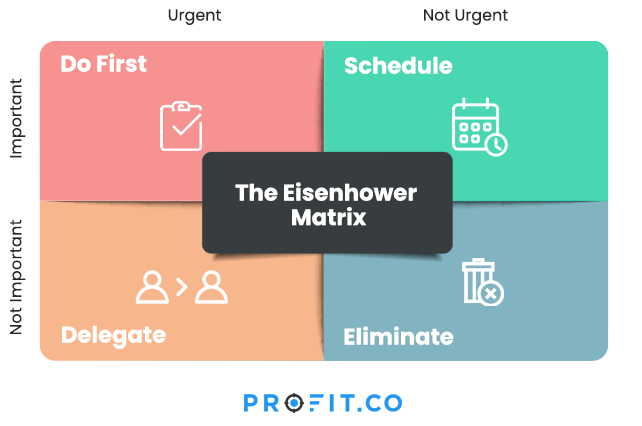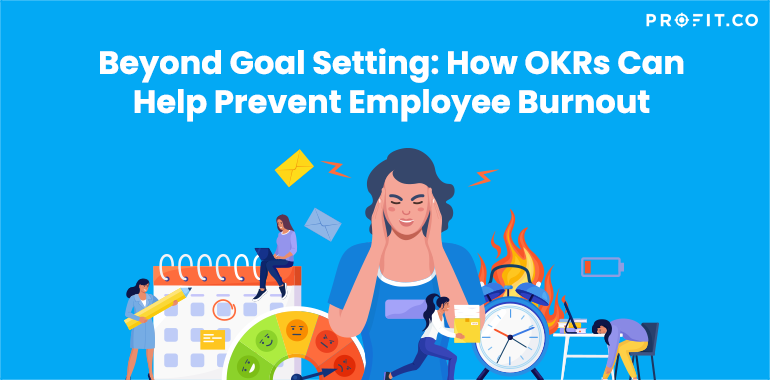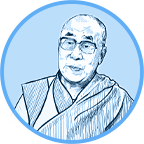This blog will explore effective strategies to prevent burnout and foster a healthier, more productive workplace.
Here are some effective ways to prevent burnout
Self-Care
1. Prioritize Rest and Sleep:
- Ensure you get enough sleep each night.
- Take short breaks throughout the day to rest and recharge.
2. Exercise Regularly:
- Engage in physical activities that you enjoy, such as walking, yoga, or team sports.
- Exercise helps reduce stress and improve overall well-being.
3. Eat a Balanced Diet:
- Maintain a healthy diet rich in fruits, vegetables, whole grains, and lean proteins.
- Stay hydrated and limit caffeine and sugar intake.
4. Practice Mindfulness and Relaxation Techniques:
- Incorporate mindfulness practices such as meditation, deep breathing exercises, or progressive muscle relaxation into your daily routine.
- These practices can help reduce stress and increase mental clarity.
Time Management
1. Set Boundaries:
- Establish clear boundaries between work and personal time.
- Avoid checking work emails or doing work-related tasks during personal time.
2. Prioritize Tasks:
- Make a list of tasks and prioritize them based on urgency and importance.
Using the Big Stones Analogy
Imagine you have a jar, a set of big stones, small stones, and sand. If you start by putting the sand and small stones in the jar, there will be no room for the big stones. However, if you start with the big stones and then add the small stones and sand, everything fits perfectly.
This analogy illustrates the importance of prioritizing your most significant tasks (the big stones) before filling your day with less important tasks (the small stones) and trivial activities (the sand).
Another powerful tool for prioritizing tasks is the Eisenhower Matrix. This matrix helps you categorize tasks based on urgency and importance, allowing you to focus on what truly matters.The Eisenhower Matrix
- Urgent and Important (Do First): Tasks that need immediate attention and contribute significantly to your goals. These are your top priorities.
- Important but Not Urgent (Schedule): Tasks that are important but can be planned for later. Schedule these tasks to ensure they are completed.
- Urgent but Not Important (Delegate): Tasks that must be done quickly but do not contribute significantly to your goals. Delegate these tasks if possible.
- Not Urgent and Not Important (Eliminate): Tasks that are neither urgent nor important. These tasks can often be eliminated to free up time for more critical activities.

By using the Eisenhower Matrix, you can effectively prioritize your tasks and ensure that you are focusing your time and energy on what matters most. This approach not only helps in improving productivity but also reduces stress and enhances your overall time management skills.
Start by identifying your big stones and placing them first in your daily schedule. Use the Eisenhower Matrix to categorize and prioritize your tasks. With these strategies, you’ll be on your way to mastering time management and achieving greater success in both your personal and professional life.
- Break larger tasks into smaller, manageable steps.
The Zeigarnik Effect is a psychological phenomenon that describes how people remember incomplete or interrupted tasks better than completed ones. Named after Russian psychologist Bluma Zeigarnik, who first observed the effect, it suggests that our minds keep tasks active until they are completed, creating mental tension that drives us to finish what we start.
This effect can be leveraged to enhance productivity and reduce procrastination. By breaking larger tasks into smaller steps, you create a series of small, unfinished tasks that your brain will naturally want to complete. This helps maintain motivation and focus, making it easier to tackle and finish large projects.
3. Delegate Responsibilities:
- Share tasks with colleagues or family members when possible.
- Don’t hesitate to ask for help if you feel overwhelmed.
4. Take Regular Breaks:
- Schedule regular breaks throughout your workday to relax and recharge.
- Use techniques like the Pomodoro Technique to maintain productivity while ensuring breaks.
Seeking Support
1. Communicate Openly:
- Share your feelings and concerns with friends, family, or colleagues.
- Open communication can provide emotional support and practical solutions.
2. Seek Professional Help:
- If you feel overwhelmed or unable to cope, consider seeking help from a mental health professional.
- Therapy or counseling can provide strategies to manage stress and prevent burnout.
3. Build a Support Network:
- Surround yourself with supportive and positive people.
- Join professional or social groups that share your interests and can provide encouragement and advice.
In dealing with those who are undergoing great suffering, if you feel “burnout” setting in, if you feel demoralized and exhausted, it is best, for the sake of everyone, to withdraw and restore yourself. The point is to have a long-term perspective.
Potential Drawbacks to Consider
Be yourself and help others be themselves
1. Engage in Hobbies:
- Make time for activities you enjoy outside of work to relax and recharge.
- Pursuing hobbies can provide a sense of fulfillment and balance.
2. Practice Gratitude:
- Keep a gratitude journal to focus on positive aspects of your life.
- Reflecting on things you are grateful for can improve your outlook and reduce stress.
3. Learn to Say No:
- Understand your limits and don’t overcommit yourself.
- Politely decline additional responsibilities if you feel they will lead to burnout.
Implementing these strategies can help you maintain a healthy balance between work and personal life, reducing the risk of burnout.
To learn all about the OKR Methodology for a more engaged workforce
Now that we’ve seen how to avoid burnout at an individual level, let’s see how organizations can create a plan in the form of OKRs and execute them.
OKR 1: Promote Employee Wellness
Ensuring that employees have the tools and resources they need to maintain their physical and mental well-being is crucial to preventing burnout. This OKR focuses on promoting wellness initiatives that encourage healthy lifestyles and stress management.
| Objective | Key Results | Outcome |
|---|---|---|
| Promote and enhance employee wellness programs to support physical and mental health. |
|
Promoting wellness programs helps employees manage stress, stay physically healthy, and maintain a better work-life balance, reducing the risk of burnout. |
OKR 2: Improve Work-Life Balance
Work-life balance is essential for maintaining employee satisfaction and productivity. This OKR aims to set clear boundaries and ensure employees have sufficient time to relax and recharge outside of work.
| Objective | Key Results | Outcome |
|---|---|---|
| Enhance work-life balance initiatives to ensure employees can disconnect and recharge effectively. |
|
By providing flexible working options and encouraging employees to take time off, the company helps prevent burnout and promotes a healthier work-life balance. |
OKR 3: Foster a Supportive Work Environment
A supportive work environment where employees feel valued and heard can significantly reduce stress and burnout. This OKR focuses on creating a culture of support and open communication.
| Objective | Key Results | Outcome |
|---|---|---|
| Create a supportive and inclusive work environment that fosters open communication and employee engagement. |
|
A supportive work environment encourages open communication, allowing employees to express concerns and seek help when needed, thus preventing burnout. |
OKR 4: Enhance Time Management Skills
Effective time management helps employees handle their workload more efficiently, reducing stress and the likelihood of burnout. This OKR focuses on providing employees with the skills and tools needed for better time management.
| Objective | Key Results | Outcome |
|---|---|---|
| Improve employee time management skills to enhance productivity and reduce stress. |
|
Teaching employees effective time management techniques helps them work more efficiently, reducing stress and preventing burnout. |
OKR 5: Recognize and Reward Efforts
360-degree feedback Recognizing and rewarding employees for their hard work and achievements boosts morale and motivation, helping to mitigate burnout. This OKR focuses on creating a culture of appreciation.
| Objective | Key Results | Outcome |
|---|---|---|
| Implement a recognition and reward system to acknowledge employee contributions and achievements. |
|
Regular recognition and rewards for hard work enhance employee satisfaction and motivation, reducing the risk of burnout by making employees feel valued and appreciated. |
OKRs are a valuable tool not just for setting goals but also for creating a work environment that prioritizes employee well-being. Remember, a successful organization thrives on a motivated and engaged workforce. By using OKRs effectively, you can create a culture that values both goal achievement and employee well-being. Here’s how OKRs can be a powerful tool to not only achieve goals but also prevent employee burnout.
Ready to start your OKR Journey for FREE?
Related Articles
-
15 Toughest questions on OKRs Answers by Ben Lamorte – Series 3
We recently hosted an insightful webinar with Ben Lamorte, a leader in OKR coaching. During the session, we covered everything... Read more
-
10 Toughest Questions on OKRs answers by Ben Lamorte -Series 1
In his Mastering OKRs Webinar, Ben Lamorte walks us through his 3-step Formula for successful OKR implementation. He tackles the... Read more
-
14 Toughest Questions on OKRs answers by Ben Lamorte -Series 2
Welcome back to Series 2 of "14 Toughest Questions on OKRs" with Ben Lamorte, where we address the most pressing... Read more
-
OKR Superpower: Aligning Product and Engineering for Maximum Impact
Product and engineering teams often face a tug-of-war between rapid feature delivery and technical feasibility. Product managers want to move... Read more

